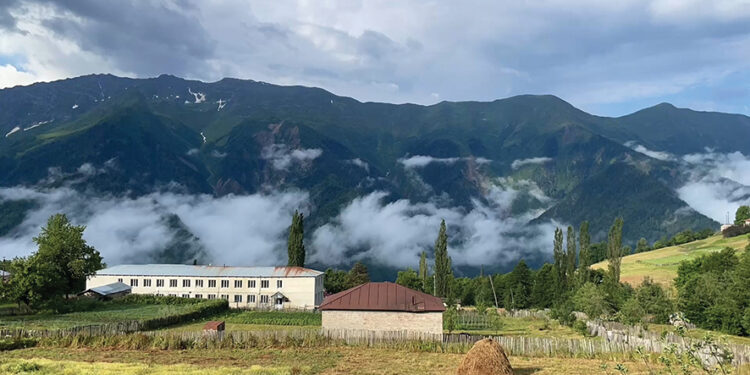Enter a dream world. See what is normally invisible or unnoticed, but no less real nonetheless.
Recently I wrote here about various experimental photographic and video processes with which I have played. One of these is the timelapse video, which I want to explore more.
In a timelapse, you are shooting much less than the roughly 28 frames per second which go into a normal-speed video. It can be any number. I usually go with 1 frame per second for my landscape videos. Then you run the set of frames (usually collected as a video already) at normal speed, and in effect watch a greatly sped-up film of what you were shooting. Typically, your camera is fixed in place, but there are also more complicated setups which move it slowly during the shooting process as well. You’ll also want, at minimum, a full battery, and at best, mains power to make sure that your device doesn’t run its battery to zero during shooting!
With clouds in a landscape, the effect is hypnotic. You are seeing how each layer of altitude has its own direction of cloud motion, often flowing past each other in different or opposite ways. Clouds can also form and disappear from and into thin air. And their shadows on the land below will highlight its form as they race across it, especially if it isn’t flat. I have shot many videos straight from one of our upstairs windows looking at the “mountain wall” across from us, in various weathers and times of day. The shortest of these are about 30 seconds, representing about an hour of real time; the longest, my masterpiece so far, is nearly 3 minutes from about 6 hours’ footage, actually 6 separate clips which I was able to join seamlessly. I usually simply prop the phone on the windowsill, stabilizing it with a block of wood, doing my best to shelter it from both wind and rain, not even using a tripod. I also have a list of other places and subjects I want to try, especially iconic Mt. Ushba moving into sunset. For these I’ll have to travel, and have plenty of time and an external battery on my hands, plus likely the tripod.
Plants growing, and flowers unfolding, are another popular subject. These can be shot indoors or in nature, and typically need much less than 1 frame per second, as their motion is usually slower. Light can change dramatically, and must be considered.
One thing of which I really want to try a timelapse video is rust forming on flat sheet steel in a slightly damp environment, as still shots of this are a favorite genre of mine already. For this week-long (or longer) process, shooting maybe a few frames per DAY, I’ll need a dedicated camera in a space with the steel which won’t be disturbed the whole time, in which power is provided and light doesn’t change. Also, the damp must not be a problem for the equipment! Challenging. But it might never have been shot before, by anyone, so is worth considering.
Advanced timelapse processes move from day to night, bringing in the element of the earth’s rotation and stars moving, often in a direction different from whatever cloud motion there is. More magic; more challenge as the light levels drop, with additional noise and exposure change to deal with. Add a slowly moving camera to this, and you’ve really got a project on your hands.
The opposite extreme from timelapse video is slow-motion, which shoots many MORE than 28 frames per second of a fast-moving subject. This, too, needs special setup. But it’s a whole other kind of “time travel,” revealing even more of the unseen or unnoticed world to us. Even my iPhone 12, with which I shoot the timelapses, can shoot this, at 60 frames per second; more advanced models can shoot at 120. More than that calls for specialist equipment, typically.
There are whole YouTube video channels just for these two and other types of exotic filming; worth seeking out to dazzle your eyes. In the meantime, try it yourself. The thing to realize with all types of experimental photography is its unpredictability. You might start your timelapse shoot with the clouds a certain way; but who can say how they will be 5 minutes from now, let alone 5 hours? You CAN predict the changes in shadows as the earth rotates, though. So there’s a mix of expected and surprising built in.
Have fun with it.
Here is a Google Drive link to my 6-hour/3-minute timelapse, my best yet, a few frames of which go with this article:
https://drive.google.com/file/d/1y3GPHY3risKS2IA4DXRV_0V6jioSOpv7/view?usp=drive_link
Blog by Tony Hanmer
Tony Hanmer has lived in Georgia since 1999, in Svaneti since 2007, and been a weekly writer and photographer for GT since early 2011. He runs the “Svaneti Renaissance” Facebook group, now with over 2000 members, at www.facebook.com/groups/SvanetiRenaissance/
He and his wife also run their own guest house in Etseri: www.facebook.com/hanmer.house.svaneti














